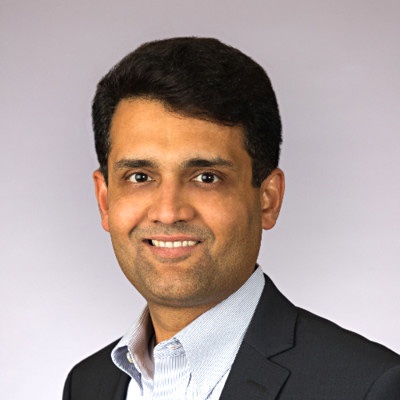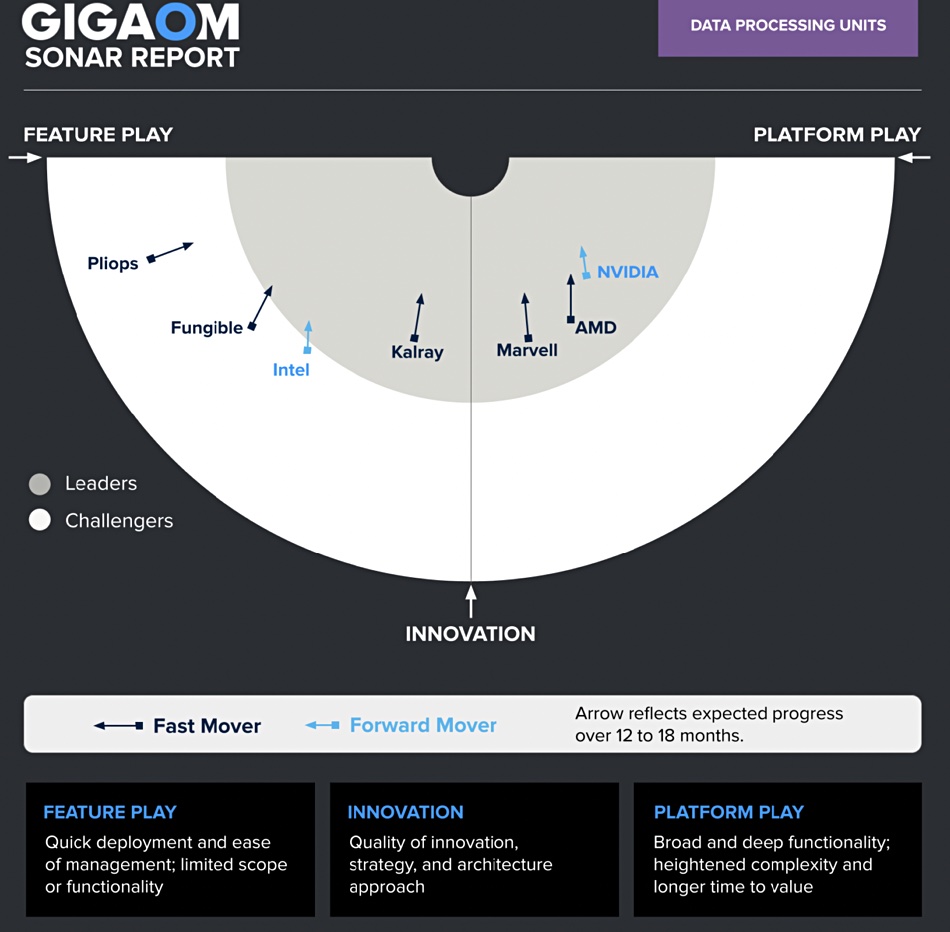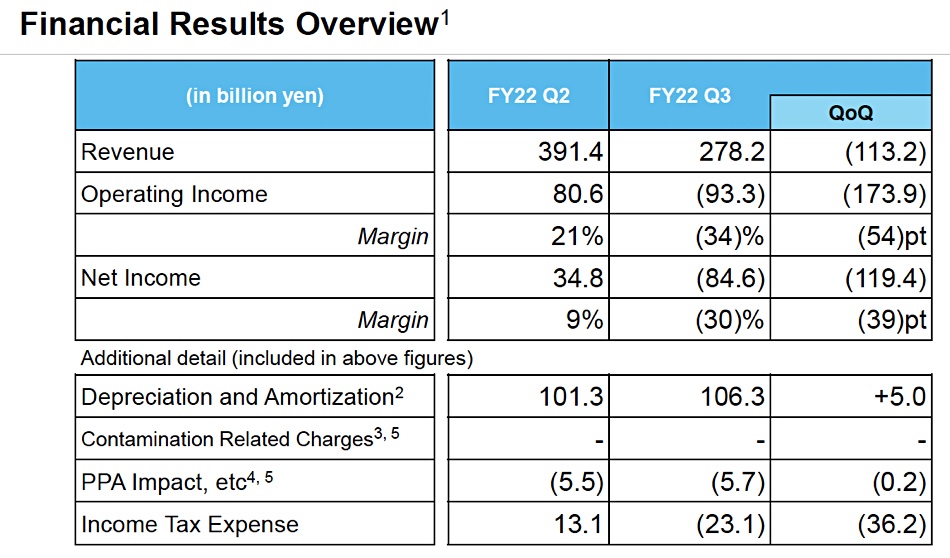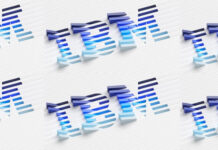
…

Data protector Commvault has released its latest platform, PR 2023. This is one of Commvault’s long-term support releases with a support lifetime of up to three years. They are different from maintenance releases which are available on a monthly schedule. PR 2023 features hybrid-multi-cloud improvements, plus additions in the Kubernetes, security and cost-savings areas.
It includes AWS-Azure cross-cloud replication and recovery with the Complete Data Protection (CDP) and Disaster Recovery (CDR) products. There is new data protection for the Couchbase Big Data NoSQL database with CDP and Commvault’s Backup & Recovery (CBAR) products. A Warm Site Replication feature in CDP and CDR allows periodic replication for lower-priority applications with moderate disaster recovery requirements. There’s more on it in a post by the company’s SVP Products Ranga Rajagopalan here.
…
GigaOm has published an emerging technology Sonar report looking at DPUs and examining AMD, Fungible (its research predates Fungible’s acquisition by Microsoft), Intel, Kalray, Marvell, NVIDIA and Pliops. Here is the Sonar diagram:

Analyst Justin Warren writes: “It is difficult to distinguish between the leading vendors on common criteria as they all have quite different focuses. Some have chosen to concentrate on certain use cases, such as storage or networking, while others are focused on specific market segments, particularly the high-end hyperscale cloud market. This is a function of the DPU market being in the very early stages of development.” Full content is available to GigaOm subscribers.
…
Japan’s Kioxia is reporting [PDF] an operating loss in its fourth 2022 calendar quarter (Kioxia’s fiscal 2022 Q3) due to lower demand for NAND flash from its fabs. Kioxia customers are using up their NAND chip inventories and not buying as much as before due to uncertain economic conditions. A table from Kioxia’s announcement shows changes from Q2 fy2022 with a reduction in revenue from ¥391.4B ($2.9B) to ¥278.2 billion ($2.07 billion) and a dramatic fall in profit from a ¥34.8 billion ($258 million) to a ¥84.6 billion ($629 million) loss.

There was weak demand in PC and smartphone markets and a sharp decline in NAND average sales prices with Kioxia writing down the value of its own inventory and lowering production volume. Demand for datacenter and enterprise SSDs is weakening sharply.
…
Architecting IT has published an Ondat-sponsored analysis report looking at “Container-Native Storage Performance in the AWS Public Cloud”, which can be downloaded from Ondat’s website. It comprises 23 pages of analysis. Analyst Chris Evans writes: “the choice of storage for CNS is affected by storage performance, cost, and resiliency. We will dig deep into the details of the implementation of each storage solution, helping the end user pick the right choice for their application.” And dig deep he does, looking at latency, IOPs and throughput for EBS, local SSDs (Instance Store Volumes), and the Elastic File System. A conclusion is: “The results from our testing indicate that NVMe drives offer the best balance of performance and cost, with good predictability when deploying Ondat container-native storage. ”
…
Scale-out filer supplier Qumulo has hired Ryan Farris as VP of Product and Brandon Whitelaw as VP of Strategic Partnerships. Qumulo says it’s entering a new chapter of growth. The new hires come just after the company wrapped up its fiscal year 2023 with a 22 percent increase in customers
…
Budapest-based post-production media business Origo Studios is using Qumulo’s software running on HPE ProLiant DL325 Gen10 Plus servers via a GreenLake contract. Origo Studios has worked on films such as Dune, Dune: Part Two and Blade Runner 2049 since opening a decade ago. Using Qumulo’s file data software delivered as-a-service through HPE GreenLake edge-to-cloud platform, the Origo Studios team says it was able to process Scanity-generated images at 4K resolution at almost twice the previous speed.
…
Samsung and SK hynix have reported a rise in orders for high-bandwidth memory (HBM) products, the ones that have a faster DRAM-CPU interface than the standard server CPU socket interface. The aim is to have CPUs process data faster for AI/ML applications including ChatGPT. The method is to get data closer to compute so less time has to be spent moving the data into the processor’s caches.
…
SSD controller supplier Silicon Motion is sampling its new SM2268XT controller to OEMs. It supports PCIe gen 4 with 4 lanes. The device is built to support 200+ layer 3D NAND with TLC and QLC cells. It has a host memory buffer design, with Silicon Motion’s 8th generation NANDXtend ECC technology using a performance-optimized 4KB LDPC engine and RAID. This delivers 1.2 million random read and write IOPS, 7.4GBps sequential reads and 6.5GBps sequential writes capability. A clock gating mechanism can power down areas of unused blocks.

…
The SNIA has released its Smart Data Accelerator Interface (SDXI) Specification v1.0, a standard for a memory-to-memory data mover and acceleration interface. It provides data movement between different address spaces, including user address spaces located within different virtual machines, and without mediation by privileged software once a connection has been established. The interface and architecture can be abstracted or virtualized by privileged software to allow greater compatibility of workloads or virtual machines across different servers. Click here to download the complimentary version of the SDXI v1.0 specification.
…
Scale-out, parallel filesystem SW provider WekaIO announced a new global channel partner program, WEKA X, saying it has a channel-led, partner-first sales strategy encompassing VARS, SIs and MSPs. They get the usual mix of tiers (Pro, Prime and Premier) with training, certifications, exclusive pricing, and incentives to streamline deal registration. Partners can buy WekaIO’s WEKA Data Platform software direct from WekaIO or from other WekaIO server and cloud partners:
…
IDC has published a VAST Data-sponsored (paid for) white paper on High-Performance NFS Storage for HPC and AI. It claims that the HPC community has moved away from NFS in the recent past because it “presented inherent scaling challenges in parallel computing environments where performance trumps everything else. … As traditional implementations of NFS-based systems were never designed for atomic parallel I/O, many practitioners in the HPC community shifted to other parallel (distributed) file systems such as Lustre that were specifically designed for parallel, clustered computing environments.” Now most HPC environments rely on parallel file systems.
The paper identifies disadvantages with this approach – skilled staff needs, SW version control, implementation planning intricacy, change management and networking complexity – all making costs higher. “IDC believes that combining the benefits of NFS, flash media, and parallel scale-out architecture on the server side provides maximum benefits for HPC-AI environments.” VAST Data claims it can provide this and lower costs – although no numbers are cited – and claims: “VAST’s NFS-based approach to HPC-AI presents a strong and most compelling case for consideration.”
…
Datacenter as a service equipment supplier Zadara said its object storage can be a target for Veeam Backup and Recovery v12’s direct write to object storage capability, joining Cloudian, Object First, MinIO, Pure Storage and Scality in that regard. Zadara said Veeam Data Platform v12 multiple Object Storage extents combined with Zadara Object Storage enables greater flexibility over configurations such as enabling dedicated Object Storage separated and isolated for certain workloads or customers. A Zadara blog goes into more detail.






